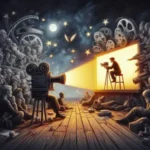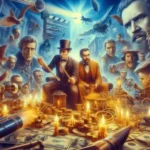In the vast landscape of cinema, film genres serve as the colorful brushstrokes that paint the canvas of storytelling, each one evoking unique emotions and experiences.
From the heart-pounding thrill of action films to the soul-stirring depths of drama, and the laughter-filled moments of comedy, every genre has its devoted fans and distinct allure. But is there a definitive “best” film genre, or does the answer lie in the rich tapestry of individual preferences and cultural perspectives? In this engaging exploration, we delve into the ultimate debate surrounding film genres, examining the factors that shape our tastes, the impact of societal influences, and how personal experiences intertwine with the cinematic journey. Join us as we navigate through the diverse world of movies, celebrating the nuances of each genre while seeking to uncover what truly makes one resonate more than the others. Whether you’re a die-hard fan of a particular genre or an open-minded cinephile, this post invites you to reflect on your own cinematic preferences and the magic that film brings to our lives.
1. Introduction to Film Genres
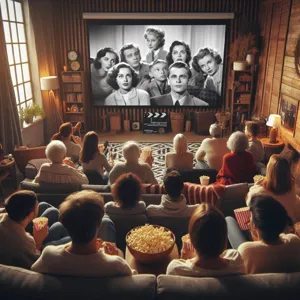
Film genres serve as the foundation of the cinematic landscape, providing audiences with a framework to understand, categorize, and appreciate the vast array of stories told through the medium of film. Each genre brings with it a unique set of conventions, themes, and emotional responses, guiding viewers through the intricate tapestry of human experience. From the heart-pounding thrills of action and horror to the poignant narratives of drama and romance, each genre offers a distinct flavor that appeals to different tastes and preferences.
As we embark on this exploration of film genres, it’s essential to recognize the cultural, historical, and personal contexts that shape our perceptions. Genres often evolve, blending and borrowing elements from one another, creating hybrids that challenge traditional boundaries. This fluidity reflects the dynamic nature of filmmaking, where innovation and creativity thrive.
In a world where streaming services bombard us with an endless selection of films, understanding genres helps us navigate our viewing choices and discover new favorites. But is there truly a “best” genre, or do our preferences reveal more about our individual experiences and values? In this discussion, we will delve into the characteristics of various film genres, examine their societal impacts, and consider how personal tastes influence our opinions on what constitutes the best in cinema. Join us as we unravel the complexities of film genres and invite you to reflect on your own cinematic preferences.
2. The Evolution of Film Genres Over Time
The evolution of film genres over time is a fascinating narrative that reflects societal changes, technological advancements, and cultural shifts. From the early days of cinema, where silent films dominated the silver screen, genres were primarily defined by their storytelling techniques and the emotional responses they evoked. The introduction of synchronized sound in the late 1920s marked a pivotal moment, giving rise to musicals, comedies, and the dialogue-driven dramas that would soon captivate audiences worldwide.
As the decades progressed, genres began to blend and evolve. The 1930s and 1940s saw the emergence of film noir, characterized by its dark themes and moral ambiguity, mirroring the anxieties of post-war society. The rise of the blockbuster in the late 20th century introduced the action and adventure genres, driven by technological innovations in special effects and a growing appetite for spectacular storytelling. Films like “Star Wars” and “Jaws” not only redefined genre boundaries but also established the framework for the modern summer blockbuster, fundamentally changing how films were marketed and consumed.
Today, the landscape of film genres is more diverse than ever, influenced by globalization and the rise of streaming platforms. Audiences now have access to a plethora of genres that transcend geographical boundaries, from Bollywood musicals to Korean thrillers. Moreover, hybrid genres are emerging, such as romantic comedies that incorporate elements of horror or science fiction, reflecting a more nuanced understanding of storytelling.
As we explore this evolution, it becomes clear that film genres are not static but rather dynamic entities that adapt to the tastes and preferences of audiences. They serve as a mirror to society, capturing the zeitgeist of different eras while simultaneously paving the way for new narratives. Understanding this evolution enhances our appreciation for film and invites us to consider how our own preferences are shaped by the ever-changing tapestry of cinematic history.
3. Defining “Best”: What Does It Mean in Film?
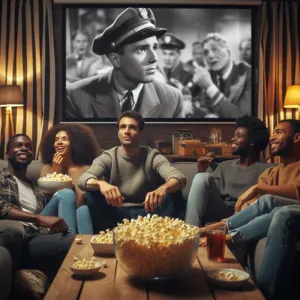
When it comes to exploring the concept of “best” in film genres, the discussion becomes intricate and layered, as it isn’t just a matter of personal taste but also involves cultural, historical, and emotional dimensions. Defining what constitutes the “best” film genre requires us to delve into the essence of cinema itself—what it aims to achieve and how it resonates with audiences.
At its core, the term “best” can be subjective, varying significantly from person to person. For some, the best genre might be the heart-pounding thrill of action films, where adrenaline and excitement reign supreme. For others, it may be the soul-stirring narratives found in dramas that evoke deep empathy and reflection on the human experience. Meanwhile, comedic films might be deemed the best for their ability to provide laughter and relief in a world often filled with stress and uncertainty.
However, the best genre can also be evaluated through more objective lenses, such as critical acclaim, box office success, and cultural impact. For instance, the sci-fi genre has produced groundbreaking films that not only captivate audiences with imaginative storytelling but also provoke thought about society’s future and ethical dilemmas. Similarly, horror films often hold a special place in cinematic discussions due to their unique ability to tap into primal fears and societal anxieties, leaving a lasting impression on viewers.
Moreover, the evolution of genres over time adds another layer to this debate. Genres blend, shift, and redefine their boundaries as filmmakers experiment with new storytelling techniques and audiences’ tastes evolve. The emergence of hybrid genres, such as romantic-comedies or action-horrors, challenges the traditional categorizations and forces us to reconsider what we mean when we label a film as “the best.”
In essence, defining the “best” film genre invites a rich dialogue about our preferences and the diverse ways cinema can impact our lives. It’s a journey that leads us to explore not just the films themselves, but also the emotions, ideas, and connections they foster within us. As we uncover the multifaceted nature of film genres, we find that the debate over what is “best” is as diverse and vibrant as the films we love to watch.
4. Popular Film Genres: An Overview
When it comes to film, the landscape is rich and varied, teeming with genres that cater to every taste and preference. Understanding the most popular film genres can provide insight into not only viewer preferences but also the cultural zeitgeist that shapes cinematic storytelling.
**1. Action:** Often a crowd favorite, action films are characterized by their fast-paced narratives, thrilling sequences, and larger-than-life characters. From explosive car chases to intense fight scenes, this genre captivates audiences looking for excitement and adrenaline. Iconic franchises like “Die Hard” and “Fast & Furious” have solidified action as a staple of mainstream cinema, appealing to those who crave exhilaration.
**2. Romance:** The romance genre taps into the universal experience of love—its joys, heartaches, and complexities. Whether it’s a sweeping epic like “Titanic” or a quirky indie film such as “500 Days of Summer,” romantic films draw viewers into heartfelt stories that explore the intricacies of relationships. This genre often intertwines with others, creating beloved sub-genres like romantic comedies and romantic dramas.
**3. Horror:** For those who enjoy a good scare, horror films provide a thrilling escape into the macabre. This genre thrives on psychological tension, supernatural elements, and the exploration of humanity’s deepest fears. Classics like “The Shining” and modern hits like “Get Out” showcase horror’s ability to reflect societal anxieties while delivering chills that linger long after the credits roll.
**4. Comedy:** Laughter is a universal language, and comedies are designed to lighten the mood and entertain. From slapstick humor to sharp wit, this genre encompasses a wide range of styles, appealing to various comedic tastes. Films like “Superbad” and “Bridesmaids” have become cultural touchstones, proving that humor can transcend generational divides and unite audiences in laughter.
**5. Drama:** Often regarded as the heartbeat of cinema, drama films delve into the complexities of human emotions and relationships. With powerful narratives and deep character development, dramas like “The Shawshank Redemption” and “Moonlight” resonate with audiences on a profound level, prompting reflection and empathy.
**6. Science Fiction and Fantasy:** These genres transport viewers to otherworldly realms, exploring futuristic concepts, alternate realities, and the boundless possibilities of imagination. Films like “Star Wars” and “The Lord of the Rings” have not only captivated audiences but have also created expansive universes that continue to influence pop culture.
Each of these genres holds a unique place in the hearts of viewers, reflecting personal tastes and societal influences. As we explore the ultimate debate of whether there is a best film genre, it’s essential to appreciate the diversity of storytelling and how it resonates differently with everyone. Whether you’re a die-hard horror fan or a romantic at heart, the beauty of film lies in its ability to connect with us all, in myriad ways.
5. The Case for Action Films: Thrills and Adrenaline
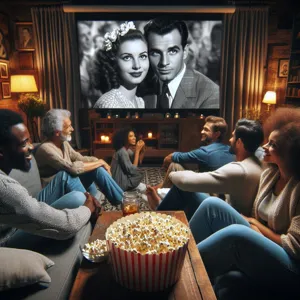
When it comes to the world of cinema, few genres can match the sheer exhilaration and excitement that action films bring to the table. From heart-pounding car chases to gravity-defying stunts, action films are designed to deliver an adrenaline rush like no other. Picture yourself on the edge of your seat, eyes wide, as the hero battles against insurmountable odds, navigating through explosive set pieces and intense fight sequences. This genre taps into our primal instincts, igniting a sense of adventure and thrill that resonates with audiences of all ages.
One of the most compelling aspects of action films is their ability to transport viewers into a world where the impossible becomes possible. Whether it’s a high-octane spy thriller or a sci-fi epic featuring intergalactic battles, these films often blur the lines between reality and fantasy, allowing audiences to escape their everyday lives. The stakes are typically high, and the pacing is relentless, ensuring that viewers remain engaged from start to finish.
Moreover, action films often showcase remarkable feats of physical prowess and choreography that can leave viewers in awe. Iconic sequences—think of the exhilarating parkour scenes in “Casino Royale” or the breathtaking fight choreography in “The Matrix”—demonstrate not just storytelling but also an art form that celebrates human capability. The combination of stunning visuals, a pulsating score, and charismatic performances creates a cinematic experience that can be both electrifying and emotionally resonant.
Action films also possess a unique ability to transcend cultural boundaries. With their universal themes of heroism, justice, and resilience, they attract diverse audiences worldwide. Blockbusters like “Fast & Furious” and “Marvel’s Avengers” have built global franchises that connect with viewers across the globe, proving that the thrill of action is a shared experience.
In a way, action films serve as a cathartic release, allowing viewers to vicariously experience danger and adventure in a controlled environment. They ignite our imaginations, inspire us to seek adventure in our own lives, and often leave us with an undeniable sense of empowerment. For many, the case for action films is not just about the escapism; it’s about the exhilarating rush that comes with every explosion, chase, and heroic showdown on the big screen.
6. The Appeal of Romantic Comedies: Love and Laughter
Romantic comedies hold a special place in the hearts of many filmgoers, blending the enchantment of love stories with the lightheartedness of humor. This genre thrives on the delightful interplay between romance and comedy, often showcasing relatable characters navigating the ups and downs of relationships. The appeal lies not only in the charming plots but also in the comfort they provide — a safe escape into a world where, despite the chaos, love ultimately prevails.
At their core, romantic comedies celebrate the joyous, sometimes tumultuous journey of finding love. They capture those awkward first dates, the sweet moments of connection, and the comedic misunderstandings that often accompany budding relationships. Think of iconic films like “When Harry Met Sally,” where witty banter and heartfelt moments intertwine, or “10 Things I Hate About You,” which reimagines Shakespeare’s classic tale with a modern twist. These films resonate because they reflect our own experiences with love, making us laugh while pulling at our heartstrings.
Moreover, the genre’s ability to blend humor with romance serves as a balm for life’s complexities. In a world where relationships can be fraught with challenges, romantic comedies offer an optimistic viewpoint, suggesting that love can conquer all, often with a good dose of laughter. They remind us not to take life too seriously and that, even in the face of adversity, a little humor can go a long way in nurturing relationships.
The tropes of romantic comedies — the meet-cute, the grand romantic gesture, and the eventual happy ending — create a comforting predictability that audiences crave. This familiarity allows viewers to immerse themselves in the story without the anxiety of an unpredictable plot. It’s this blend of love and laughter that keeps fans coming back for more, making the genre an enduring favorite in the cinematic landscape. Whether it’s a cozy night in or a date night out, romantic comedies continue to win hearts, proving that sometimes, all you need is a little love and a good laugh to brighten your day.
7. The Depth of Drama: Emotional Engagement and Storytelling
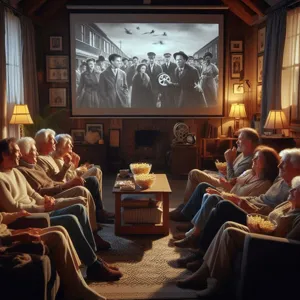
Drama, often hailed as the most profound of film genres, serves as a powerful medium for emotional engagement and storytelling. At its core, drama delves deep into the complexities of human experience, offering audiences a lens through which they can explore the intricacies of life, love, and loss. The genre’s ability to evoke genuine emotions sets it apart, drawing viewers into a world that feels both relatable and poignant.
When we watch a dramatic film, we are often met with characters that mirror our own struggles, aspirations, and vulnerabilities. This connection fosters an emotional bond that can leave a lasting impact long after the credits roll. Think of iconic films like “The Pursuit of Happyness” or “A Beautiful Mind,” which illustrate the resilience of the human spirit amidst adversity. These narratives not only captivate but also inspire, reminding us of our capacity for empathy and understanding.
Furthermore, drama excels in its storytelling techniques, using rich character development and intricate plots to convey deep, meaningful messages. The genre often tackles profound themes such as family dynamics, societal challenges, and personal growth, inviting viewers to reflect on their own lives and the world around them. By addressing complex moral dilemmas and emotional conflicts, dramatic films encourage introspection and discussion, making them relevant across generations.
In essence, the depth of drama lies in its ability to resonate with audiences on a fundamental level. It invites us to confront our emotions, question our beliefs, and ultimately connect with the shared human experience. While genres like action, horror, or comedy can entertain and thrill, it is drama that often lingers in our hearts and minds, prompting us to ponder the narratives we live out in our own lives. As we explore the vast landscape of film, it becomes clear that the power of drama is not only in its storytelling but also in its capacity to unite us through our shared humanity.
8. The Creativity of Science Fiction: Exploring New Realms
Science fiction, often abbreviated as sci-fi, stands out as a genre that relentlessly pushes the boundaries of imagination and creativity. With its roots deeply embedded in speculation, futurism, and the exploration of the unknown, sci-fi invites audiences to traverse uncharted realms—both in the cosmos and within the human psyche. From the moment audiences were introduced to the fantastical worlds of authors like H.G. Wells and Isaac Asimov, it became clear that this genre was not just about the technology of the future, but about the exploration of what it means to be human in a rapidly changing world.
One of the most captivating aspects of science fiction is its propensity for innovation. Filmmakers and writers alike utilize advanced concepts—like time travel, artificial intelligence, and extraterrestrial life—as vehicles for deeper narratives. For instance, films like “Blade Runner” and “Ex Machina” challenge viewers to consider the ethical implications of artificial intelligence, while classics like “Star Wars” and “Arrival” immerse audiences in vast, intricate universes, encouraging them to ponder their place in the galaxy.
Moreover, sci-fi serves as a powerful commentary on contemporary societal issues. By setting stories in distant futures or parallel realities, filmmakers can tackle pressing topics such as climate change, social inequality, and technological dependence with a unique lens. Movies like “The Matrix” and “Children of Men” not only entertain but also stimulate critical discourse about the trajectory of humanity.
The genre’s flexibility is also noteworthy; it seamlessly blends with elements of horror, romance, and adventure, creating rich narratives that appeal to a wide range of viewers. Whether it’s the thrilling suspense of “Inception,” the heartwarming bonds in “Wall-E,” or the haunting reflections in “Annihilation,” sci-fi showcases its ability to evoke a spectrum of emotions.
In essence, the creativity of science fiction lies in its boundless potential to explore new realms—both literally and metaphorically. It sparks curiosity, ignites imagination, and compels us to question the very fabric of reality. As viewers, we are not merely passive spectators; we become explorers of new possibilities, reflecting on the past, present, and future through the lens of creativity that only science fiction can offer.
9. The Impact of Documentaries: Informing and Inspiring
Documentaries have long held a unique place in the film landscape, serving not just as a source of entertainment but as a powerful tool for education and inspiration. Unlike traditional narrative films, which often prioritize storytelling and character development, documentaries focus on real-life events, people, and issues, providing audiences with a lens through which to examine the world around them.
The impact of documentaries is profound; they can inform viewers about pressing social issues, historical events, and cultural phenomena that they may not encounter in their daily lives. For instance, films like “13th” and “Won’t You Be My Neighbor?” have sparked conversations about systemic racism and the life of Fred Rogers, respectively, illustrating how these films can resonate deeply with societal values and personal beliefs. By presenting factual information in an engaging format, documentaries have the power to shift perspectives, challenge preconceived notions, and inspire action.
Furthermore, the emotional resonance of a well-crafted documentary can be as powerful as any fictional narrative. The ability to witness real struggles, triumphs, and human connections offers a stark authenticity that can deeply move audiences. Documentaries often shine a light on marginalized communities and underreported stories, giving voice to those who might otherwise remain unheard. As viewers engage with these narratives, they often feel a sense of responsibility and motivation to effect change, whether that be through advocacy, donations, or simply spreading awareness.
In an age where misinformation is rampant, the role of documentaries as a trusted source of information cannot be overstated. They invite viewers to critically engage with the subject matter, encouraging an inquisitive mindset that fosters lifelong learning. As we explore the diverse landscape of film genres, it’s clear that documentaries not only inform and inspire but also hold immense power to influence the way we perceive and interact with the world. In this debate over the best film genre, the impact of documentaries stands as a compelling argument—one that elevates the genre beyond mere entertainment to a catalyst for change and understanding.
10. Genre Blending: When Categories Overlap
As the landscape of cinema continues to evolve, a fascinating trend has emerged: genre blending. This phenomenon occurs when filmmakers deliberately mix elements from multiple genres to create a unique viewing experience that defies traditional categorization. Think of a romantic comedy that weaves in elements of science fiction, or a horror film that incorporates musical numbers—these creative fusions challenge our preconceived notions of what a genre can be and enrich the storytelling landscape.
Take, for instance, the wildly popular film “Get Out.” At first glance, it appears to be a straightforward horror movie, but upon closer inspection, it reveals layers of social commentary that are deeply rooted in satire and suspense. Similarly, “The Shape of Water” combines fantasy, romance, and drama, creating a narrative that explores love in its most unconventional forms. These films invite viewers to engage with complex themes while entertaining them in unexpected ways.
The appeal of genre blending lies in its ability to attract a broader audience. Fans of different genres may find common ground in these hybrid films, leading to discussions that traverse various cinematic traditions. This openness not only enriches the viewing experience but also encourages filmmakers to push the boundaries of creativity. As genres continue to overlap, we must ask ourselves: does the blending of genres signal the end of categorization, or does it simply expand our understanding of what a film can be?
In this ever-changing cinematic landscape, genre blending challenges us to reconsider our preferences and explore the artistry that lies within the intersections of storytelling. As we embrace this trend, we open ourselves up to a myriad of perspectives, ultimately enriching our appreciation for the art of film. Whether you prefer the thrills of horror, the laughs of comedy, or the heartwarming moments of romance, there’s a blended genre waiting to captivate your imagination.
11. Cultural Influences on Genre Preferences
Cultural influences play a pivotal role in shaping our preferences for film genres, acting as the backdrop against which our tastes are developed and refined. These influences can be as broad as national traditions or as specific as familial practices, creating a rich tapestry of factors that dictate why we gravitate towards certain types of films over others.
For instance, in countries with a deep-rooted history of storytelling through folklore or myth, one might find a strong preference for fantasy and adventure genres. Films that immerse viewers in magical realms echo the cultural narratives that have been passed down through generations, resonating on a deeply personal level. Conversely, regions with a focus on realism and social issues may favor dramas that tackle pertinent themes, reflecting the realities of everyday life and the societal challenges faced by their communities.
Moreover, global events and societal shifts often influence genre popularity. The rise of political thrillers in times of unrest or dystopian films during periods of uncertainty highlights how external circumstances can pivot audience interest toward narratives that resonate with their lived experiences.
Additionally, the proliferation of streaming platforms has introduced audiences to a broader spectrum of genres, breaking down traditional barriers. A viewer in one part of the world may find themselves captivated by a South Korean horror film, while another might develop a taste for Bollywood musicals, illustrating how cultural exchanges can foster diverse genre preferences.
In essence, our film genre preferences are not just a matter of personal taste; they are intricately woven into the cultural fabric of our lives, shaped by our backgrounds, experiences, and the world around us. As we explore the ultimate debate on whether there is a best film genre, it is essential to recognize and appreciate the myriad cultural influences that contribute to our cinematic choices.
12. The Role of Personal Experience in Film Choices
When it comes to film preferences, personal experience plays an undeniable role in shaping our choices and opinions. Each individual’s journey through life is unique, and the films we gravitate toward often reflect our backgrounds, memories, and emotional landscapes. For instance, someone who grew up in a bustling city may find a profound connection to urban dramas, resonating with the grit and vibrancy of city life, while another person raised in a serene countryside might prefer heartwarming tales of rural existence or nature documentaries.
Personal milestones—such as first loves, significant losses, or transformative moments—can also influence our cinematic tastes. A romantic comedy might evoke fond memories of a cherished relationship, while a gripping thriller could bring back feelings of excitement from a particularly adventurous time in one’s life. In this way, films become not just entertainment but a tapestry of our experiences, woven together by the stories we choose to engage with.
Moreover, cultural backgrounds and societal contexts further enrich our film preferences. A person from a culture that values traditional storytelling may find deeper meaning in films that reflect those narratives, while someone immersed in contemporary pop culture might lean towards blockbusters that serve as collective conversation starters. The diversity of personal experiences creates a vibrant spectrum of film preferences, ensuring that no single genre can claim supremacy over others.
Ultimately, the role of personal experience in film choices highlights the beauty of cinema as a universal language that speaks to our individual stories. It’s a reminder that while we may have our favorite genres, the magic of film lies in its ability to connect us through shared emotions, inspirations, and reflections of our lives. As we explore different genres, we not only entertain ourselves but also embark on a journey through the myriad experiences that define humanity.
13. Audience Reception: How Genres Are Perceived
Audience reception plays a crucial role in understanding how different film genres are perceived and appreciated. Each genre carries its own set of conventions, expectations, and emotional triggers, shaping the way viewers engage with the story. For instance, action films are often associated with adrenaline-pumping sequences, intense conflict, and spectacular visual effects, leading audiences to anticipate excitement and thrill. In contrast, romantic comedies invite viewers into a world of charm, wit, and heartwarming moments, where laughter and love intertwine.
Cultural contexts also heavily influence how genres are received. A horror film that sends shivers down the spine in one culture might be perceived as comical in another, showcasing the subjective nature of genre interpretation. Additionally, demographic factors such as age, gender, and personal experiences can shape individual preferences, leading to diverse interpretations of the same film. For example, a coming-of-age drama may resonate deeply with teenagers navigating their own journeys, while adults might reflect on nostalgia or lost opportunities.
Furthermore, audience reception can shift over time, influenced by societal changes, technological advancements, and evolving cinematic trends. Genres that were once at their peak may experience a resurgence or decline, as seen with the recent revival of interest in musicals and the growing popularity of superhero films. In this fluid landscape, understanding how genres are perceived offers valuable insights into audience desires and cultural shifts, revealing not just what people enjoy watching, but also why certain narratives resonate profoundly at different points in time.
Ultimately, examining audience reception provides a window into the intricate dance between film and its viewers, illuminating the ways in which genres not only entertain but also reflect and shape collective identities and values. As we dive deeper into this debate, it becomes clear that the question of whether there is a “best” film genre is less about definitive answers and more about the rich tapestry of human experience that cinema captures across its many forms.
14. Conclusion: Is There a Universal “Best” Genre?
In conclusion, the question of whether there is a universal “best” film genre remains as elusive as the perfect movie itself. Throughout our exploration, it has become evident that film genres are deeply personal and subjective; what resonates with one viewer may leave another feeling indifferent. Each genre offers a unique lens through which to experience storytelling, from the heart-pounding excitement of action films to the poignant reflections found in dramas, the fantastical worlds of science fiction, and the lighthearted escapism of comedies.
Cultural backgrounds, individual experiences, and personal tastes all play pivotal roles in shaping our preferences. While a riveting thriller might be the ultimate genre for one person, another may find solace and joy in the whimsical charm of animated films. Additionally, the context in which we watch a film can significantly influence our perceptions—an exhilarating action flick might hit just right during a casual gathering with friends, while a deeply moving drama may resonate more in a quiet, reflective moment.
Moreover, the evolution of cinema itself continues to blur the lines between genres, leading to innovative hybrid films that defy traditional categorizations. This fluidity not only showcases the creativity of filmmakers but also enriches the viewer’s experience, inviting audiences to embrace a broader spectrum of storytelling.
Ultimately, rather than seeking a definitive answer to the question of the best film genre, perhaps it’s more meaningful to celebrate the diverse tapestry of cinema that caters to our varied emotions and experiences. Whether you find yourself drawn to the thrill of a suspenseful plot, the laughter of a well-timed joke, or the tears of a heartfelt narrative, the beauty of film lies in its ability to connect us and evoke a spectrum of feelings. So, let us continue to explore, debate, and cherish the myriad genres that make up the cinematic landscape—because in the end, the best genre may very well be the one that resonates with you the most.
15. Encouraging Diverse Perspectives: What’s Your Favorite Genre?
When it comes to film, the beauty often lies in its diversity, and each genre brings a unique flavor that resonates with different audiences. Encouraging diverse perspectives is not just about acknowledging the myriad of genres available, but also about understanding how personal experiences, cultural backgrounds, and emotional connections shape our preferences.
So, what’s your favorite genre? Is it the heart-pounding thrills of a gripping horror film that keeps you on the edge of your seat, or the whimsical charm of a romantic comedy that makes your heart flutter? Perhaps you find solace in the gripping narratives of dramas, or the mind-bending twists of science fiction that challenge your perception of reality.
Asking this question opens the door to rich discussions and insights. Each choice reveals something about the individual—from their taste in storytelling to the themes that resonate with them. For instance, a fan of action films may appreciate the adrenaline rush and the escape from reality, while someone who favors documentaries might be drawn to the pursuit of truth and knowledge.
Moreover, this inquiry allows us to explore how genres can evolve and intersect. In recent years, we’ve seen genres blend in innovative ways—think of the horror-comedy hybrids that satirize societal norms while delivering genuine scares. This blending of genres not only broadens the audience but also invites a wider array of interpretations and conversations.
Encouraging others to share their favorite genres can foster a deeper appreciation for the art of filmmaking. It helps us celebrate the complexity and richness of cinema, prompting us to step outside our comfort zones and explore films we might not have considered before. So, what’s your favorite genre? Share your thoughts, and let’s dive into the vibrant world of film together!
As we conclude our exploration of the ever-fascinating debate surrounding the best film genre, it’s clear that preferences are as diverse as the films themselves. Each genre offers a unique lens through which we interpret stories, emotions, and experiences, shaping our cultural landscape and personal identities. Whether you find solace in the heartwarming narratives of romantic comedies, the adrenaline rush of action films, or the thought-provoking themes of documentaries, the beauty of cinema lies in its variety and ability to resonate with each of us differently. Ultimately, there may not be a definitive answer to the question of the best film genre, but rather a rich tapestry of choices that reflect our individual tastes and perspectives. We invite you to embrace the genres that speak to you, engage in discussions with fellow film enthusiasts, and continue exploring the vast world of cinema. What are your thoughts? Share your favorite genres and films in the comments below; let’s keep the conversation going!


